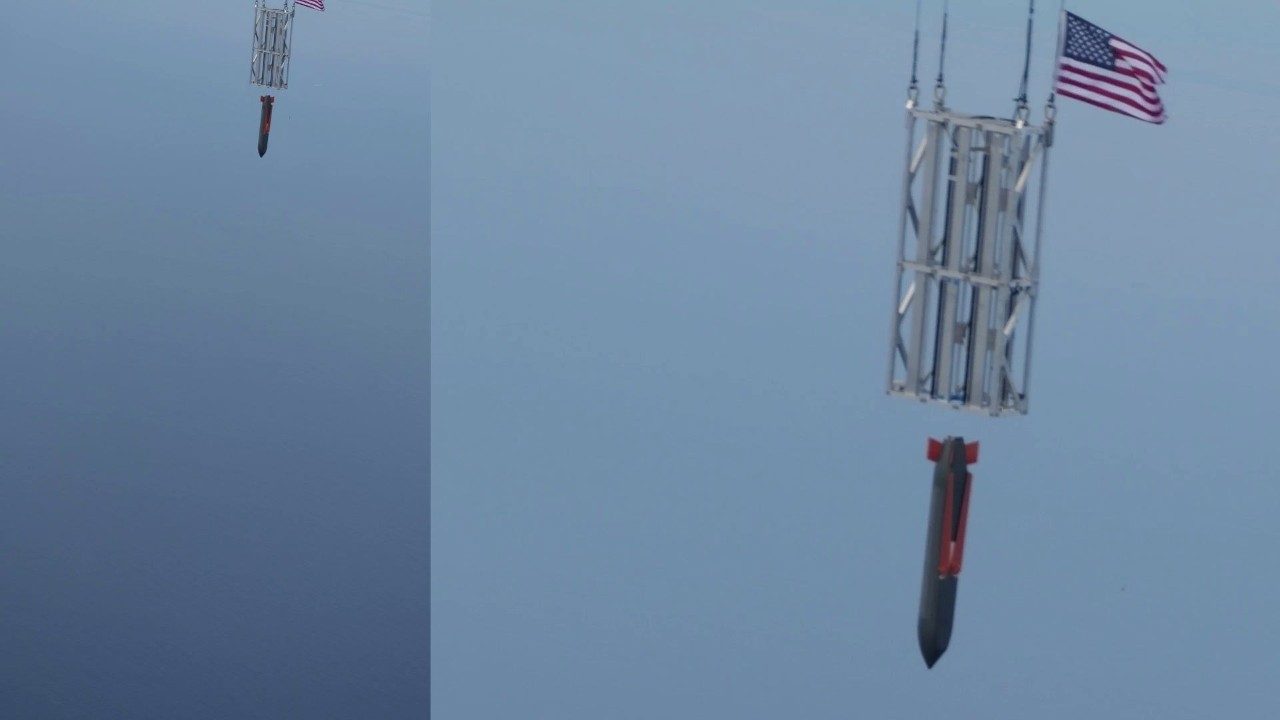Affordable Cruise Missiles Move Into The Mainstream
The next U.S. Air Force cruise missile that is expected to enter the arsenal of air-launched weapons will be subsonic, networked and long-range—three common, modern features of the type.
But what distinguishes the proposed Family of Affordable Mass Missiles (FAMM) is the sheer quantity to be delivered and the type of aircraft—namely, Boeing C-17s and Lockheed Martin C-130s—that will launch them.
As proposed, the Air Force would acquire 3,010 FAMM weapons in fiscal 2026 alone, the first year of production. That is equivalent to more than half of the 5,569 Lockheed Martin AGM-158 cruise missiles expected to be acquired over the decades-long life span of the similar—albeit considerably pricier—Joint Air-to-Surface Standoff Missile (JASSM) program.
“In February of last year, the program didn’t exist,” says Steve Milano, a munitions industry veteran and senior director for advanced effects at Anduril, one of the two declared competitors for FAMM production. “And here we are looking at fiscal 2026 going to 3,010. . . . That concept is ludicrous, in my mind, from my traditional thinking.”
To obtain such quantities, the Air Force is looking outside the traditional defense industrial base. The Anduril Barracuda-500 and the Zone 5 Technologies Rusty Dagger cruise missiles are the finalists to win the first FAMM production contract next year.
“The idea that we could have gone from a design that didn’t exist to now being fully able to execute and build 3,000 in a single year is crazy, from my old thinking,” Milano says, “but right in [line] with where I’ve lived for the past 18 months.”
Anduril is building the Arsenal-1 munitions plant near Columbus, Ohio. Renderings show a sprawling campus of 10 buildings. To accommodate the Air Force’s delivery schedule, Anduril plans to start producing Barracuda-500s at several existing facilities spread across the country, Milano says. Zone 5 Technologies could not be reached for comment.
The FAMM program also defines a new approach to deploying munitions. By introducing the missiles as palletized, air-dropped weapons for the mobility fleet, the Air Force expects to reap two benefits: a dramatic expansion of long-range strike aircraft outside the bomber fleet and a somewhat smoother path to integration.
Two major advantages for palletized weapons are simplicity and cost. Because the FAMM weapons will not be exposed to the harsh vibration and thermal environment of exterior weapon bays, the designs can use lower-cost materials. The Air Force expects to pay an average of about $220,000 for each FAMM weapon, or roughly 10-17% the cost of other cruise missiles in the inventory.
Air-dropping cruise missiles from a cargo aircraft still presents challenging certification requirements. Such weapons will not require certification by the Seek Eagle office that governs the safety of rail-launched weapons but instead will be scrutinized by Air Mobility Command’s Air Transportability Test Loading Activity office.
Rail-launched or pylon-mounted munitions must be fully integrated into the host aircraft’s safety-critical operational flight program, a process that sometimes takes years to complete. However, palletized FAMM missiles are treated essentially as cargo, bypassing the need to modify the aircraft.
“From the perspective of the C-17 or C-130 crew, it’s no different than dropping a pallet full of [meals ready to eat],” Milano says. “It’s just a size, weight and load configuration application.”
The FAMM concept still requires fundamental operational changes. Bomber crews are familiar with the extensive mission planning required for employing a single cruise missile, let alone pallets filled with several missiles. But the C-17 and C-130 crews must either be trained to develop those skills or fly with Global Strike Command or Air Combat Command personnel on FAMM strike missions. Air Mobility Command planners also face a new demand on a limited mobility fleet: balancing requirements for flying long-range strike missions versus traditional cargo sorties.
Since 2020, the Air Force Research Laboratory’s Rapid Dragon program has been working through those integration issues, after test-launching cruise missiles and surrogates from C-17s and C-130s. Air Force Special Operations Command has similar plans for its fleet of Lockheed Martin MC-130s, using Cargo Launch Expendable Air Vehicles with Extended-Range missiles instead of FAMM.
https://aviationweek.com/defense/missil ... mainstream
Einige Aufnahmen der "Rusty Dagger" und eines Drohnenabwehrflugkörpers namens "White Spike":
https://www.linkedin.com/posts/zone-5-t ... 55296-HyLi
 https://www.linkedin.com/posts/zone-5-t ... 98913-b0QE
https://www.linkedin.com/posts/zone-5-t ... 98913-b0QE
 https://www.linkedin.com/posts/zone-5-t ... 54434-8DBJ
https://www.linkedin.com/posts/zone-5-t ... 81184-WB55
https://www.linkedin.com/posts/zone-5-t ... 54434-8DBJ
https://www.linkedin.com/posts/zone-5-t ... 81184-WB55
 https://www.linkedin.com/posts/zone-5-t ... 72736-W7lR
Lugged Affordable Cruise Missile (LACM)
https://www.linkedin.com/posts/zone-5-t ... 72736-W7lR
Lugged Affordable Cruise Missile (LACM)
The Statement of Capabilities should provide evidence that the contractor can deliver a weapon that meets the minimum requirements:
a. 500lb class weapon with minimum 100lb warhead
b. Capable of blast / frag / and limited penetration effects
c. Variable fuze options
d. Range ≥ 250NM
i. Low altitude performance of 100NM under 1,000ft AGL
ii. Selectable impact angle exceeding 70 degrees
e. Nav System capable of operating in a degraded GPS environment
f. Terminal Accuracy: CEP 50 w/in 10m both in non-EMI (Electromagnetic Interference)
g. Weapons Open Systems Architecture (WOSA) & Modular-Series (M-Series) aligned
h. Long term unit cost not to exceed $300K
i. Production Capacity: >1,000 AURs in a 12-month period
j. Delivery of weapons commencing by April 2026 (min 25 missiles/month)
https://sam.gov/opp/160ce28cdbc9412880a ... c97f8/view








